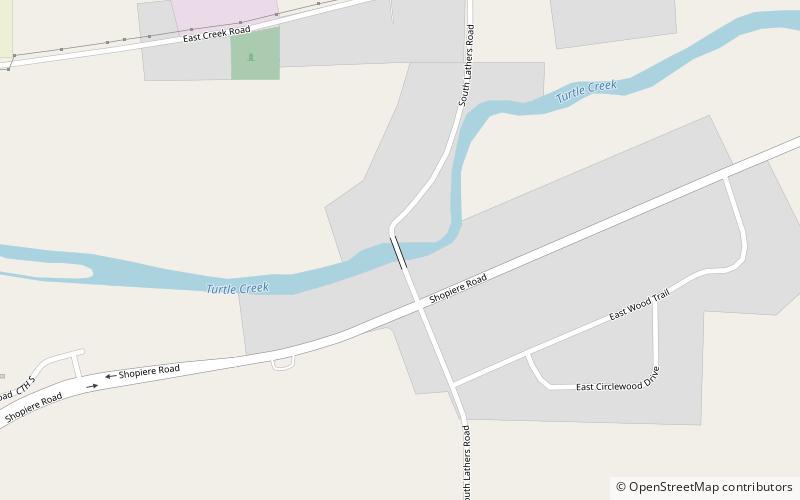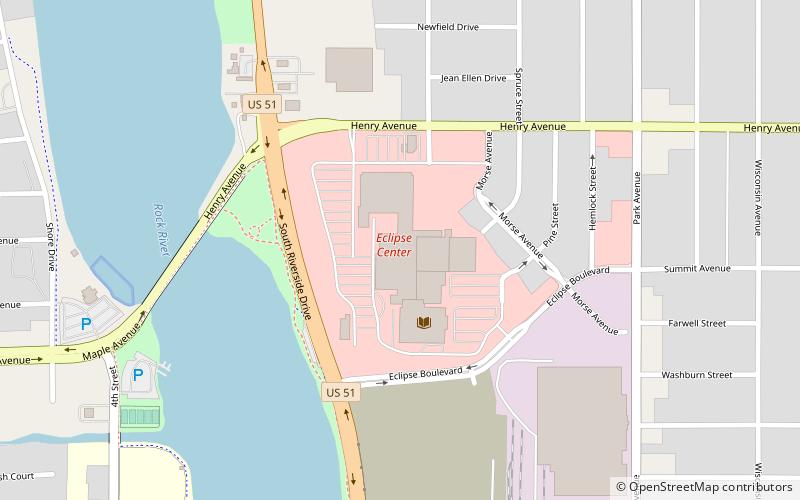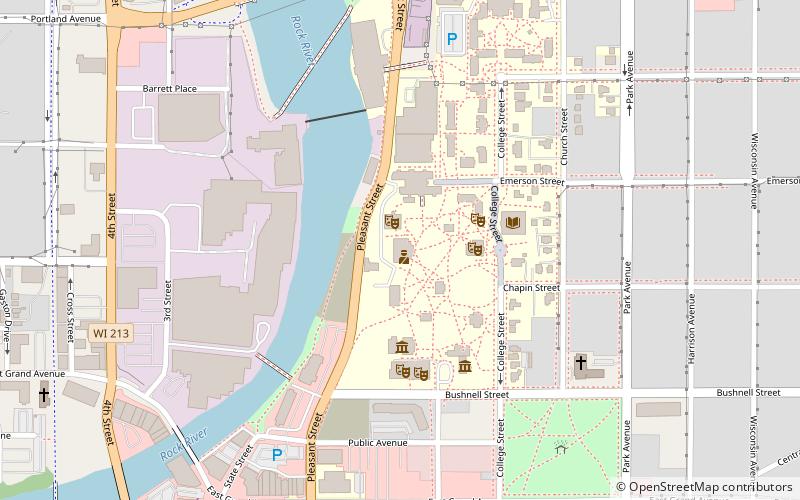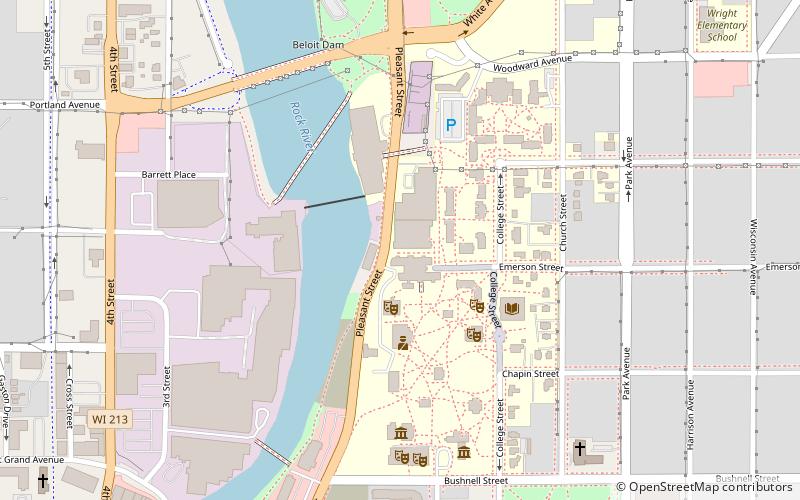Turtleville Iron Bridge, Beloit
#15 among attractions in Beloit


Facts and practical information
The Turtleville Iron Bridge is an overhead truss bridge built in 1887 where South Lathers Road crosses Turtle Creek near Beloit, Wisconsin. It was added to the National Register of Historic Places in 1977. ()
Beloit United States
Turtleville Iron Bridge – popular in the area (distance from the attraction)
Nearby attractions include: Harry C. Pohlman Field, Logan Museum of Anthropology, Wright Museum of Art, Public Library.
 Arenas and stadiums, Baseball, Sport venue
Arenas and stadiums, Baseball, Sport venueHarry C. Pohlman Field, Beloit
78 min walk • Harry C. Pohlman Field is a baseball field located in Beloit, Wisconsin, United States. The stadium was built in 1982 and holds 3,501 people. It was the home of the Beloit Snappers minor league baseball team of the High-A Central from its founding until July 18, 2021.
 Museum, History museum
Museum, History museumLogan Museum of Anthropology, Beloit
141 min walk • Logan Museum of Anthropology is a museum of Beloit College, located in Beloit, Wisconsin, United States. It was founded in 1894 and contains about 300,000 archaeological and ethnological objects from around the world.
 Museum
MuseumWright Museum of Art, Beloit
142 min walk • The Wright Museum of Art is a small art museum maintained and operated by Beloit College in Beloit, Wisconsin. It houses a collection of approximately 6,000 objects, has five gallery spaces, and provides training for undergraduate students in museum studies.
 Library
LibraryPublic Library, Beloit
119 min walk • The Beloit Public Library is a public library located in Beloit, Wisconsin. The library is a member of the Arrowhead Library System, a consortium of seven libraries serving Rock County, Wisconsin.
 Shopping, Shopping centre
Shopping, Shopping centreEclipse Center, Beloit
118 min walk • Eclipse Center, formerly known as Beloit Plaza or Beloit Mall, is a mixed-use development and former shopping mall in Beloit, Wisconsin. It is undergoing a renovation with the aim of making it a pivotal point in the city.
 Park, Tower
Park, TowerBeloit water tower, Beloit
131 min walk • The Beloit water tower is a historic octagonal limestone water tower completed in 1889 in Beloit, Wisconsin. In Beloit's younger days, the city's fire protection consisted of two volunteer companies with hoses and mobile pumps that drew water from the Rock River and from private wells and cisterns.
 Museum, Specialty museum
Museum, Specialty museumAngel Museum, Beloit
142 min walk • The Angel Museum was a museum in Beloit, Wisconsin devoted to the collection and display of angel figurines. Founded in 1998, the museum was housed in the former St. Paul's Catholic Church along the Rock River. The museum closed its doors in 2018 due to insufficient funding.
 Church, Gothic Revival architecture
Church, Gothic Revival architectureSt. Paul's Episcopal Church, Beloit
149 min walk • St. Paul's Episcopal Church is a Gothic Revival-styled church built 1848–51 in Beloit, Wisconsin - the oldest church in continuous service in Rock County. On April 4, 1978, it was added to the National Register of Historic Places for its architectural significance. It is affiliated with the Episcopal Diocese of Milwaukee.
 Romanesque revival architecture
Romanesque revival architecturePearsons Hall of Science, Beloit
140 min walk • The Pearsons Hall of Science was built in 1892 on the campus of Beloit College in Beloit, Wisconsin. It was added to the National Register of Historic Places in 1980 because it was designed by the firm of Daniel Burnham and because it marks an expansion of the science curriculum at the college.
 Greek Revival architecture
Greek Revival architectureLathrop-Munn Cobblestone House, Beloit
152 min walk • The Lathrop-Munn Cobblestone House is a 1.5-story Greek Revival-styled house built about 1848 in Beloit, Wisconsin, striking for the care with which the mason arranged the tiny cobbles. In 1977 the building was placed on the National Register of Historic Places.
 Observatories and planetariums
Observatories and planetariumsSmith Observatory, Beloit
138 min walk • Smith Observatory was an observatory at Beloit College in Beloit, Wisconsin. Completed in 1882, the observatory was funded by Janette S. Herrick and named in memory of her brother, John F. Smith. It served the campus from 1882 until the 1950s. In 1967, it was used as a coffee house before being torn down in 1969.
